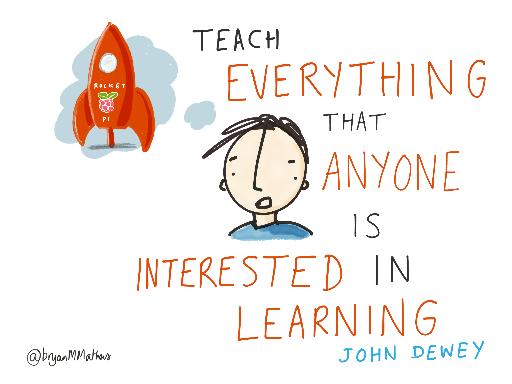Use 'Print preview' to check the number of pages and printer settings.
Print functionality varies between browsers.
Printable page generated Friday, 26 April 2024, 9:32 PM
2 Planning your open online course
Introduction
Designing an online course can be a daunting prospect, particularly if you have never undertaken the development of a course in a digital environment before. Planning content in advance and deciding how your course will be delivered is vital if you are to successfully deliver your intended learning outcomes.
In this session, you will look at an overview of the key elements involved in planning.
Listen to the following audio recording in which Patrina Law introduces the session.
Transcript: 2 Planning your open online course
2.1 The early stages of planning
Ask yourself a few questions at the planning stage that will help focus your thoughts:
- What is the main focus of my course?
- Who is the target audience?
- What problem am I trying to solve?
Ensure that these points are made clear at the beginning of the course and refer to them when selecting your resources. Whatever the size of audience for your course, you should have a good understanding of existing literature on the subject. This not only demonstrates that you have researched the subject, but provides a broader view and routes for further exploration for your learners.
Having a clear understanding of who your learners are and how they will benefit from the course being taught in an online format is also important. If your course has been taught in the past as a face-to-face or mixed method endeavour, consider the successes and failures of that approach.
2.2 What do we mean by an open online course?
At The Open University (a distance learning provider), formal courses are delivered to students in a variety of ways, often combining approaches to learning and teaching that have historically been tailored to optimise the pedagogical uses of new technology or our understanding of peer review and assessment, for example. For many courses, students are supported by a subject-specialist tutor, hence, these formal courses are taught using a variety of media – video, audio, printed materials, website – underpinned by real human intervention in many cases.
The University also delivers open online courses via OpenLearn which are openly licensed and available at all times to millions of people over the period of a year (also known as open educational resources – OER). These courses often contain elements of the same subject matter taught to OU students via the formal curriculum, modified for mass appeal, but with no tutor support. Hence, when delivering an online course in this way, it is appropriate to assume that the audience can be anyone, anywhere, but that the course itself must be self-sufficient in terms of not requiring an educator who actively guides learners. This is an entirely legitimate approach to online course design. It is also less expensive if you wish your course to exist in perpetuity, available to all, without the need for the overhead of administration. (Note though, that this course details all approaches of tutor support as possibilities beyond a purely un-tutored open course.)
In the context of this course, we are therefore defining ‘open’ as meaning to be available freely and (if you choose) perpetually open. ‘Open’, in the context of free learning provision, can also refer to something being openly licensed. (Licensing is discussed in Session 4.)
2.3 Audience
Being clear about your audience at the planning stage and sticking to these assumptions throughout makes it possible to make the best use of your time and the assets used in your course.
It seems like the obvious first prompt when planning a course – who is my audience? – but considering more than just a basic demographic will shape your pedagogical style and the elements you introduce into your course. For example, it may not be enough to say that you are writing ‘For those managing small volunteer organisations’. Ask yourself ‘Who are these people likely to be?’ and ‘What do I want them to achieve by undertaking this course?’
2.3.1 Who are my core learners?
When thinking about the intended audience of your course, consider the following questions:
- What is likely to be their geographical location for studying this course and what assumptions can I make about them? If your audience is likely to be in a remote location, you may consider the use of alternative formats (downloadable) that are versions of your course that can be studied offline. You should also consider cultural sensitivity if providing real-world examples.
- What prior knowledge should I assume of my learners? (This should be made clear at the outset.)
- What tools will my learners have available to them to study (tablets, paper only, desktop, any/all modern tools for accessing learning online)?
- When do I expect them to be studying (during their lunchbreak, grabbing an hour in the evening here and there, in a dedicated classroom setting, in a work environment, etc.)?
2.3.2 Gathering resources – human or online
You may be an expert in the topic that you intend to teach, but it is always prudent to ensure that you have the latest opinion and thought behind a subject to ensure it is as up to date as possible. In short, undertake your own literature review. If you have colleagues who are also attached to the subject matter, bring them in as sources to write or critically review your course. Essential to this is running your initial thoughts and plan past a trusted colleague before you embark on the body of course creation.
2.4 Learning outcomes
A fundamental part of creating an online course is describing to the learner what they can expect to achieve through taking and completing the course. Learning outcomes tell the learner what they are going to learn about and the context in which they will be learning. They can be seen as objectives which, overall, the learner can hope to meet when the course is complete, helping them to understand where the course will take them as they study.
Writing learning outcomes for a course can be tricky to get right because describing the kind of learning that is going to be achieved through selection of the correct verbs is not always straightforward. A model that is often referred to in education is called Bloom’s Taxonomy of Educational Objectives, more often referred to as Bloom’s Taxonomy. While the roots of the model are within complex psychological concepts, it has been adapted and simplified since its conception in 1956 to become widely used by instructional designers.
In its basic form, the taxonomy describes how a learner first achieves a basic level of knowledge of a subject and builds the complexity of their knowledge in a systematic and structured way. Bloom describes five levels of cognitive learning: knowledge, comprehension, analysis, synthesis and evaluation.
These terms, or verbs that are variants of them, can often be found within learning outcomes. For example, a learning outcomes page within a course that looks at an introduction to bicycle maintenance may read as follows:
Following completion of this course, you will be able to:
- describe the different types of tyres that are commonly found on bikes
- consider the conditions that may lead to a puncture occurring
- understand why a puncture on a bicycle should be fixed
- list the basic tools required to fix a puncture
- develop skills required to fix a punctured bicycle tyre.
Choosing the correct wording for your course depends on the level at which you are teaching. For example, a course aimed at learners who are completely new to a particular subject will use verbs based around the lower end of Bloom’s Taxonomy in order to help the learners gain a solid understanding of the basic principles of the subject e.g. ‘List the basic tools required to fix a puncture’.
A postgraduate course looking at a similar subject will use wording based around the higher end of the taxonomy e.g. ‘Analyse the structure of materials used within the construction of a pneumatic tyre’.
Including learning outcomes at the start of your course will not only set the tone for the learner, it will also help with search engine optimisation (web discoverability of your course), discussed in more detail in Session 10. The number of learning outcomes relates to the length of your course; very short courses (1–2 hours for example) may only have two or three learning outcomes, whereas a course of 25 hours may have four or five.
2.5 Course delivery approach
Depending on the subject, the availability of teaching and support staff and the needs of the learners, the approach you take to course design and delivery can differ widely among online courses. Listed below is a variety of definitions that have been identified for you to consider:
- Face-to-face (classroom-based) course with resources available online to supplement learning e.g. lecture notes, videos or additional reading.
- The flipped learning (or flipped classroom) approach whereby learners view their lectures in the form of videos outside of the classroom, then use the classroom as an environment for activities and discussion.
- The blended learning approach with some guided classroom or online group activity combined with online reading, quizzes and activities.
- A fully online course with elements of social learning, where learners are supported over a defined period of time and study a course together, for example, as in a MOOC. Learners may benefit from the support of their peers and a tutor/forum moderator.
- If resources are more limited, particularly staff time to support online learners and moderate discussion forums, then it may be best to consider a fully open course. These have no start or finish dates and that offer complete flexibility to the learner, for example those found on OpenLearn.
- The ebook approach can also be used as an alternative version of the fully open course or created specifically for offline use. After initial download, an ebook can be provided in a variety of formats for use on different devices or to print.
Learning design (instructional design) is discussed in Section 5 with a template for you to use to plan the structure of your course. Within the approaches discussed above, you may wish to consider to what extent you drive learning through social learning and activities. A narrative may be based on using personas, for example, with real-world examples (such as the free course on digital literacy by the OU Digital literacy: succeeding in a digital world). Where you are describing skills, you may ask learners to consider their current practice and reflect on this at the start and at the end of the course.
Assessment is discussed in Session 6 and can be applied to all or none of these settings.
2.6 Using rich media
Deciding how to use digital media within your course is fundamental to its success and is also likely to be heavily driven by your budget, i.e. using existing material versus creating new material. Using appropriate digital media will not only enhance the look and feel of the course that you are designing but also support the learner in their studies, aid in learner retention and encourage completion of the course. Not all the people who choose to study your course will have preferences for the same digital media so creative use of assets will help address this issue and widen accessibility. Creating a course which is enhanced by rich digital media will offer a degree of flexibility in the course design. The course author should also be mindful that some learners may have a disability and therefore may not be able to use some or all of the assets that are created for the course. It is important to consider alternative formats of assets which can be broadly accessed but that also afford the same learning opportunities.
When selecting audio or video from elsewhere e.g. channels such as YouTube, it is good practice to attribute the author and refer to the associated licence for re-use. Examples of the various types of rich media are now discussed, with associated examples. Considering these should help when planning what you have the time to develop yourself, or collate from other sources, for your course.
2.6.1 Audio
Engaging with a topic being delivered via an audio recording allows the learner to listen on a device of their choice and at a time that suits them. Short pieces of audio interspersed within a course that draw out key topics will enable you to break up text and can allow you to introduce a ‘voice’ to the course, or a series of voices. In the interests of accessibility, it is essential to provide transcripts to allow learners to read, download or machine-read what you provide as audio or video.
- Example: The business of football (Open University free course)
- Example: The philosophy of love (Open University. An interview based audio discussion (two people) – 15–20 minutes broken down into 5 x 3 min segments.)
2.6.2 Video
The use of video within a course can help a learner understand the topic through visualisation. Supplementing written course materials in this way can be effective in holding the learner’s attention and providing a welcome break from reading. Overuse of video (e.g. the dumping of multiple video lectures online – the talking head) is unlikely to be appealing, hence mixing your media – text, audio, video and activities in combination – can provide a rounded and more immersive learning experience.
- Example: Introducing the voluntary sector (video from Open University free course)
- Example: Interviews with charity shop workers (video on YouTube)
- Example: Sixty second adventures in religion (top-end animation, YouTube)
- Example: The History of Money (Open University. Lower cost video; no animation but use of cuts between illustrations)
2.6.3 Images
Possibly the most straightforward digital media that can be used by a course designer are still images.
These can be easy to source or create and often highlight the point that the educator is trying to make, simply and effectively. Digital images are easy to work with and can be resized and altered without in-depth graphics knowledge.
Images can range from things you have drawn yourself to diagrams, flow-charts, graphs, infographics and photographs. As with reusing any forms of rich media, ensure that you attribute the designer/creator of the image and the associated licence for use.
- Example: The business of football (image from Open University free course)
2.6.4 Quizzes and activities
Providing assessment within an online course is as flexible as the tools you have available to you. Our experience of evaluating learners in open, online courses with no tutorial support, shows that assessment is key to motivation and learning. When asked to rate how much they liked the various forms of video, audio, activities and quizzes provided through OpenLearn free courses, learners rated quizzes with feedback as most liked.
Some examples of how we have used the various quiz types that the Moodle learning management system (LMS) has to offer are given below. It is not an exhaustive list, but it shows the range of tools available within this LMS and that are common to others:
- Example: English: skills for learning (activity from Open University free course).
- Example: Introducing the voluntary sector (activity based on learners watching an embedded video. Taken from Open University free course.)
- Example: Introducing the voluntary sector (quiz testing knowledge from a complete week/session of study. Taken from Open University free course.)
- Example: English: skills for learning (embedded interactive, from Open University free course).
Approaches to assessment more generally are discussed in more detail in Session 6 and how to build quizzes in Session 7. While quizzes and activities are a subset of this, spending some time looking at how they are used in other open online courses as part of course planning will give you a sense for what you can achieve in the time and resources available to you.
As a rule of thumb, applying at least one piece of formative assessment – for example, through a short set of quiz questions for each major topic covered – will engage your learners in the subject and provide an opportunity to reinforce learning.
2.7 Summary
In this session you have looked at the importance of planning an open online course, understanding your audience and how to start thinking about approach and resource planning.
In the next session you will consider how to choose an appropriate platform to host your course. You will also learn about the production and importance of alternative formats, and how to ensure that your course is accessible.
You can now go to Session 3.
Further reading
Acknowledgements
This session of the course was written by Patrina Law on behalf of the Free Learning team at The Open University.
Except for third party materials and otherwise stated (see terms and conditions), this content is made available under a Creative Commons Attribution-NonCommercial-ShareAlike 4.0 Licence.
Images
Figure 1: by Bryan Mathers http://bryanmmathers.com/ CC BY ND
Figure 2: by opensource.com https://www.flickr.com/ photos/ opensourceway/ 6555466069/ CC BY SA
Figure 3: by Calico Spanish http://calicospanish.com/ a-rainbow-of-diversity-diverse-methods-and-styles-in-world-language-teaching/ CC-BY
Figure 4: http://thebluediamondgallery.com/ l/ learning.html CC BY-SA 3.0 NY
Every effort has been made to contact copyright owners. If any have been inadvertently overlooked, the publishers will be pleased to make the necessary arrangements at the first opportunity.



